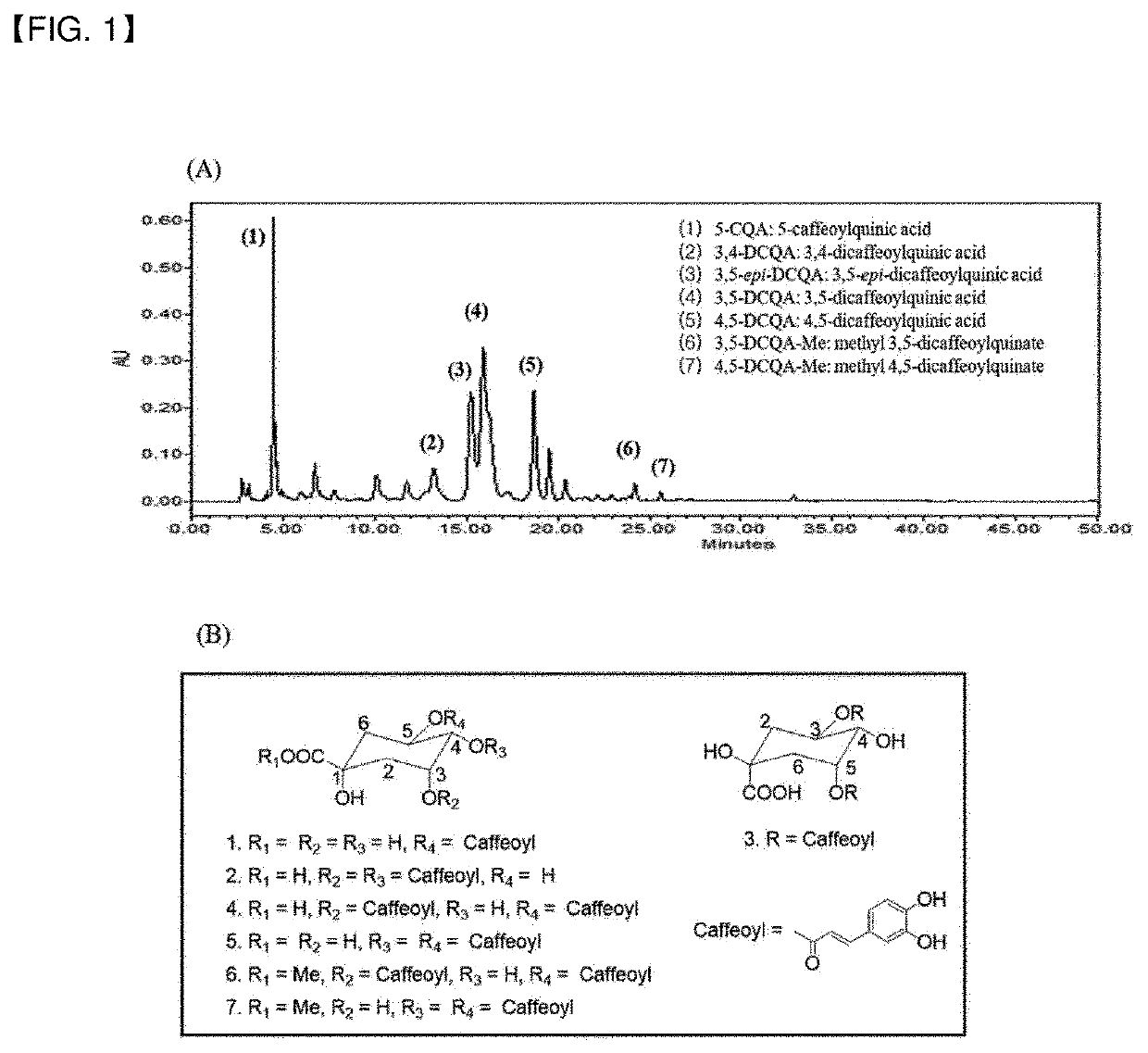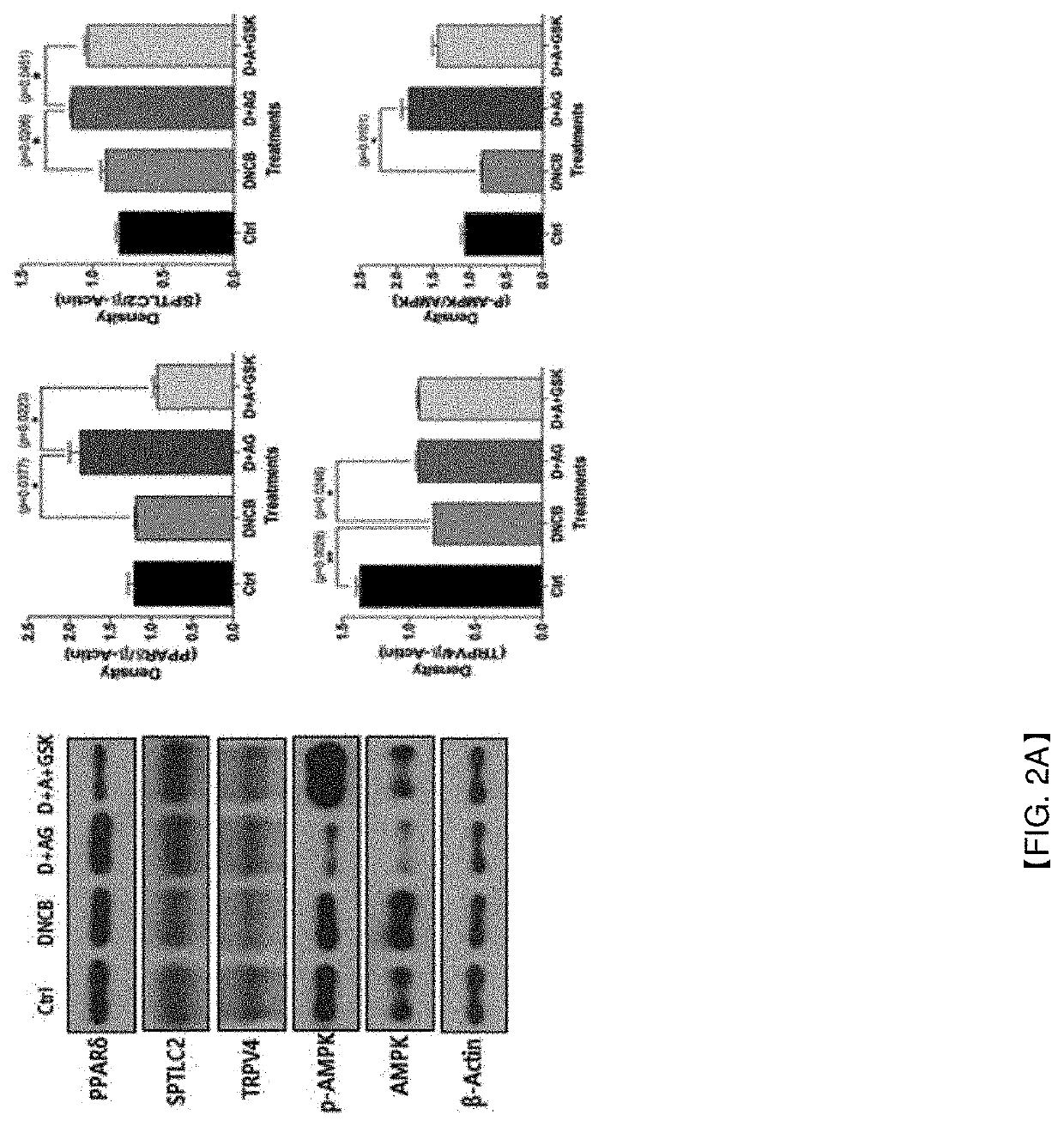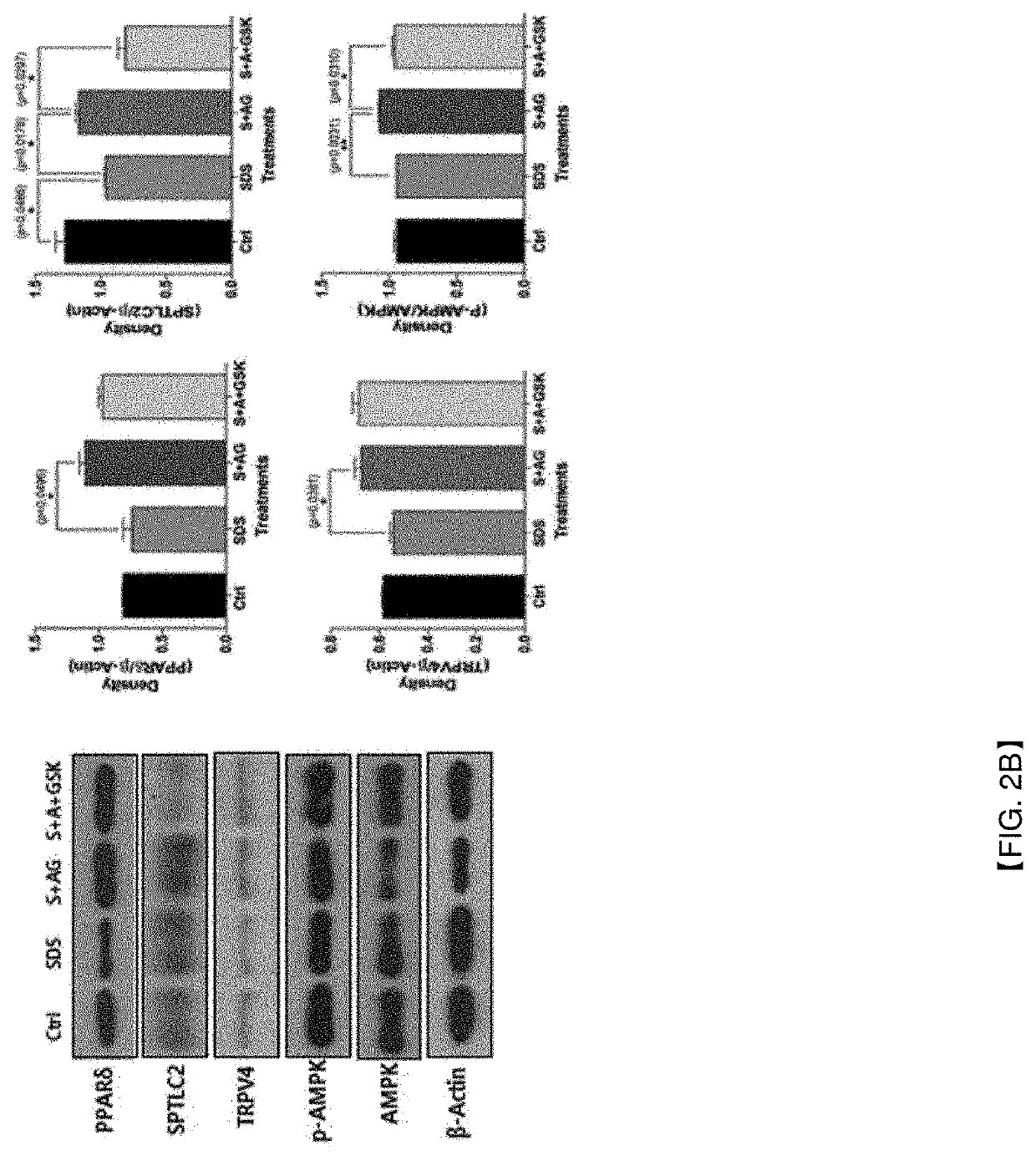Composition for improving skin barrier damage and/or alleviating skin inflammation, containing 3,5-dicaffeoylquinic acid as active ingredient
a technology of dicaffeoylquinic acid and active ingredient, which is applied in the direction of drug compositions, dermatological disorders, plant/algae/fungi/lichens ingredients, etc., can solve the problems of increasing the transepidermal water loss from the stratum corneum, simple mechanical failure of the outer layer of the skin, and severe immune responses, so as to improve the skin barrier damage, improve the effect of skin inflammation, and prevent, treat and improve inflammatory skin diseases
- Summary
- Abstract
- Description
- Claims
- Application Information
AI Technical Summary
Benefits of technology
Problems solved by technology
Method used
Image
Examples
example 2
of Keratinocytes (HaCaT)
[0088]HaCaT cells (human keratinocytes) were cultured in Dulbecco's modified Eagle's medium (DMEM) containing 10% fetal bovine serum (FBS) and 1% antibiotic-antimycotic solution at 37° C. in a 5% CO2 incubator. The cell culture medium was replaced with fresh DMEM every 48-72 hours. HaCaT cells within 5-17 passages were plated at a density of 1×104 cells per well in an 8-well chamber slide, or at a density of 1×106 cells per well in a 6-well culture plate in DMEM containing 100% fetal bovine serum and 1% antibiotic-antimycotic solution. The cells were cultured for 24-48 hours in a 5% CO2 incubator at 37° C. Then, the medium was replaced with DMEM containing 1% fetal bovine serum. Thereafter, the cells were treated for 24 hours with DNCB (5 μM, Sigma-Aldrich, Louis, Mo., USA) or SDS (30 μM, Sigma-Aldrich) along with the AG extract (50 μg) and the PPARδ antagonist GSK0660 (Sigma-Aldrich). In addition, the cells were treated with 1 μM 3,5-dicaffeoylquinic acid (3...
example 5
n of Keratin, Involucrin, β-Defensin and TNFα in HaCaT Cells
[0096]To investigate the effect of TRPV4 and AMPK on the expression of biomarkers related to skin barrier constituents, defense and inflammation, the protein expression for keratin, involucrin, β-defensin and TNFα was evaluated by immunohistochemical staining of HaCaT cells treated with antagonists for TRPV4 and AMPK.
[0097]Western blot was conducted for TRPV4, AMPK and PPARδ in HaCaT cells treated with antagonists for TRPV4, PPARδ and AMPK. The HaCaT cells fixed on a slide chamber were immunohistochemically stained with antibodies for keratin, involucrin, defensin and TNFα. Images were taken at 200× magnification, and the densities for the images were analyzed with the Image J program. The protein extracts were electrophoresed on 10% polyacrylamide gel and blotted to a nitrocellulose membrane. The nitrocellulose membrane was bound with primary and secondary antibodies sequentially, and then chemiluminescence was exposed to ...
example 6
on Between Protein Expression of TRPV4, PPARδ and AMPK in HaCaT Cells and Antagonists for TRPV4, PPARδ and AMPK
[0099]To determine the priority of major regulators which are TRPV4, PPARδ and AMPK, the protein expression level of TRPV4, PPARδ and AMPK in HaCaT cells treated with antagonists for TRPV4, PPARδ or AMPK was measured by western blot.
[0100]As a result, in the HaCaT cells treated with the TRPV4 antagonist, all the protein expression levels for TRPV4, PPARδ and p-AMPK were significantly decreased. The PPARδ antagonist treatment lowered the protein expression levels for PPARδ and p-AMPK, but it did not change the TRPV4 protein expression. The AMPK antagonist, compound C, decreased the protein expression only for p-AMPK, but it did not affect the protein expressions for TRPV4 and PPARδ (FIG. 4A and FIG. 4B).
PUM
| Property | Measurement | Unit |
|---|---|---|
| Fraction | aaaaa | aaaaa |
| Fraction | aaaaa | aaaaa |
| Fraction | aaaaa | aaaaa |
Abstract
Description
Claims
Application Information
 Login to View More
Login to View More - R&D
- Intellectual Property
- Life Sciences
- Materials
- Tech Scout
- Unparalleled Data Quality
- Higher Quality Content
- 60% Fewer Hallucinations
Browse by: Latest US Patents, China's latest patents, Technical Efficacy Thesaurus, Application Domain, Technology Topic, Popular Technical Reports.
© 2025 PatSnap. All rights reserved.Legal|Privacy policy|Modern Slavery Act Transparency Statement|Sitemap|About US| Contact US: help@patsnap.com



